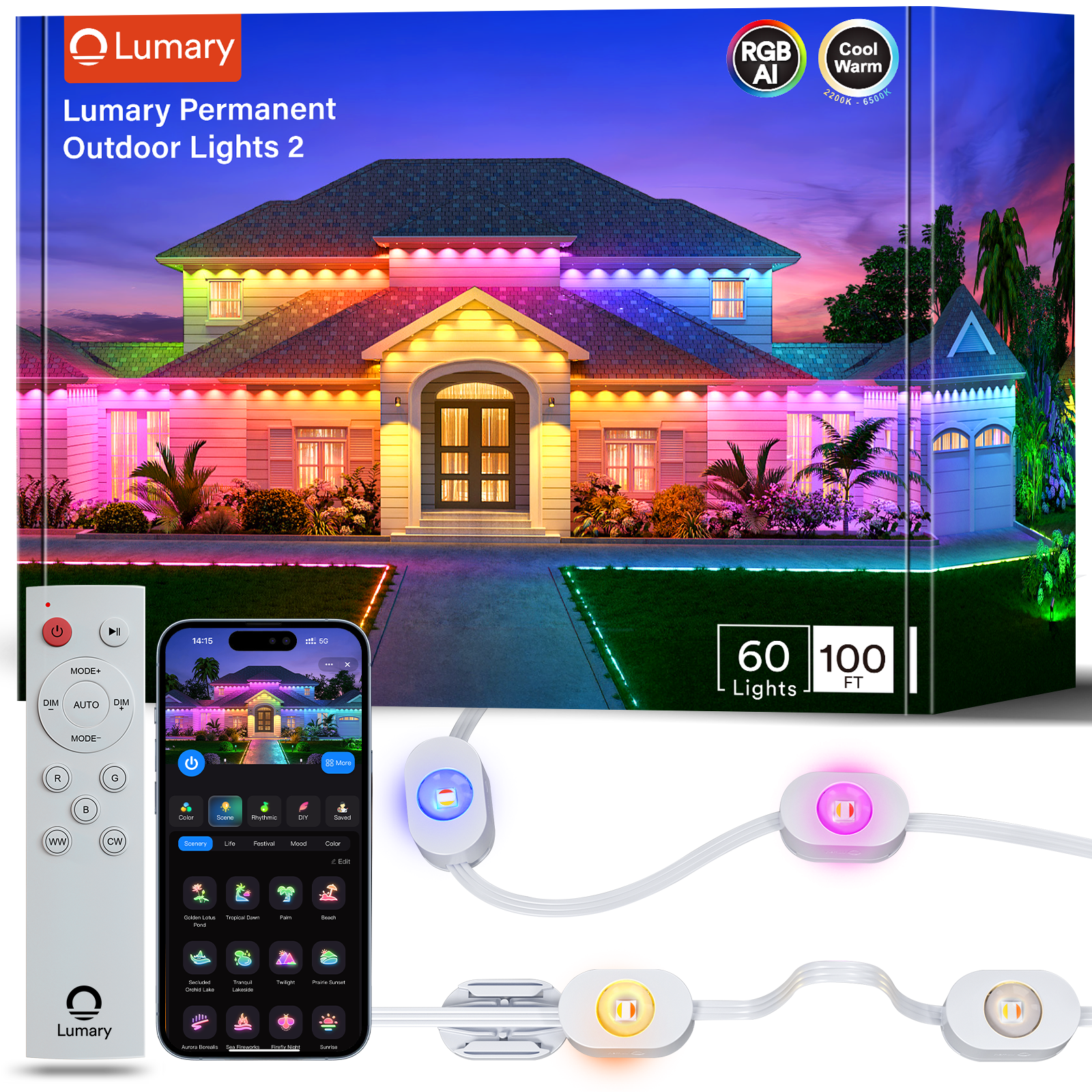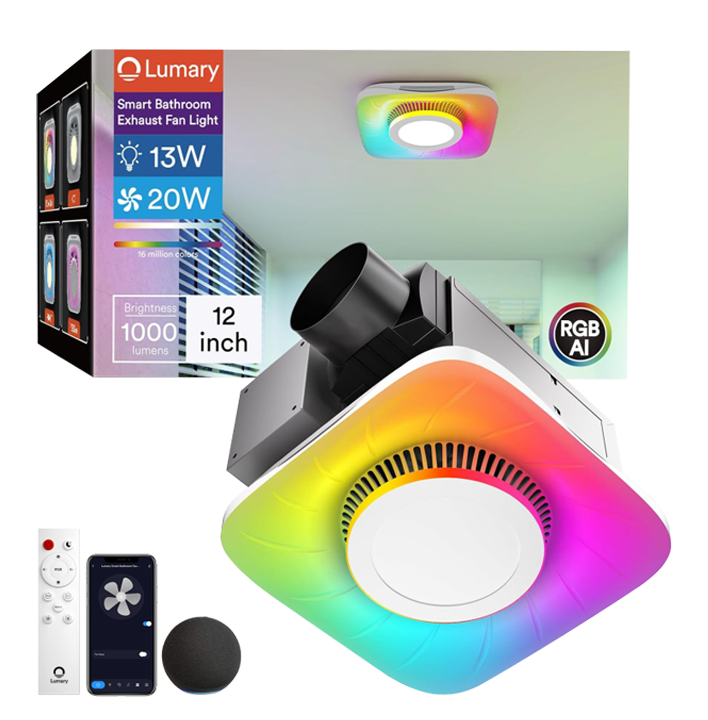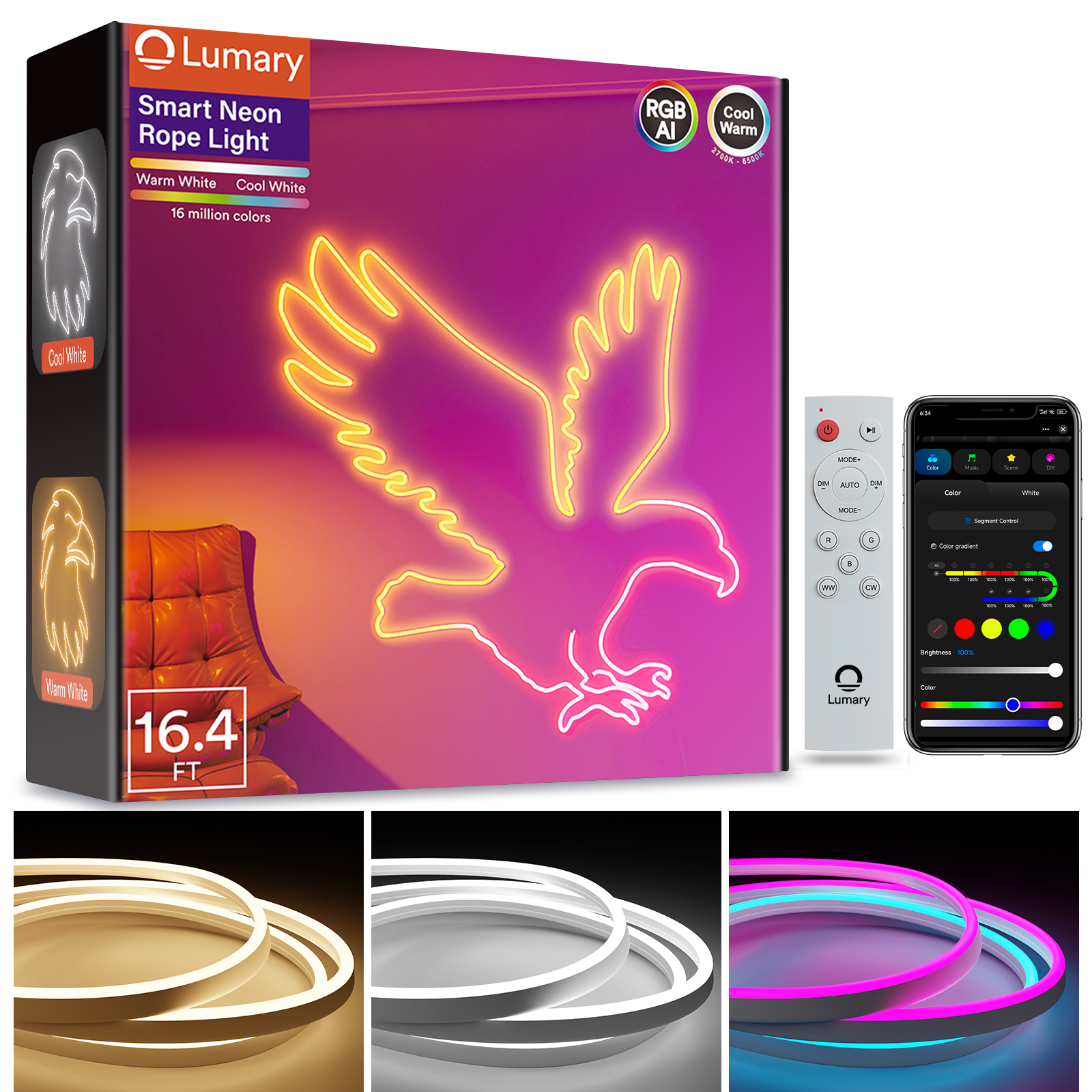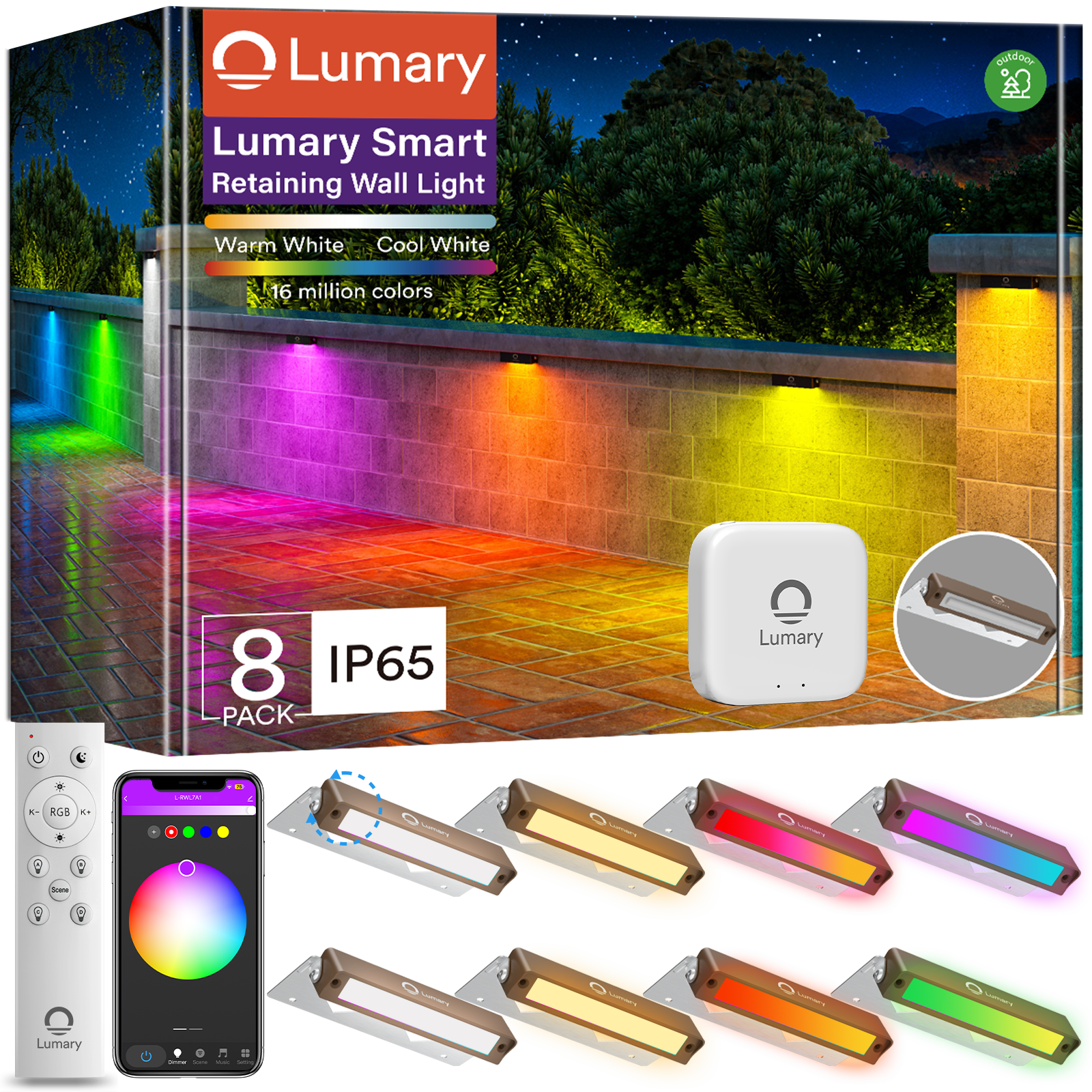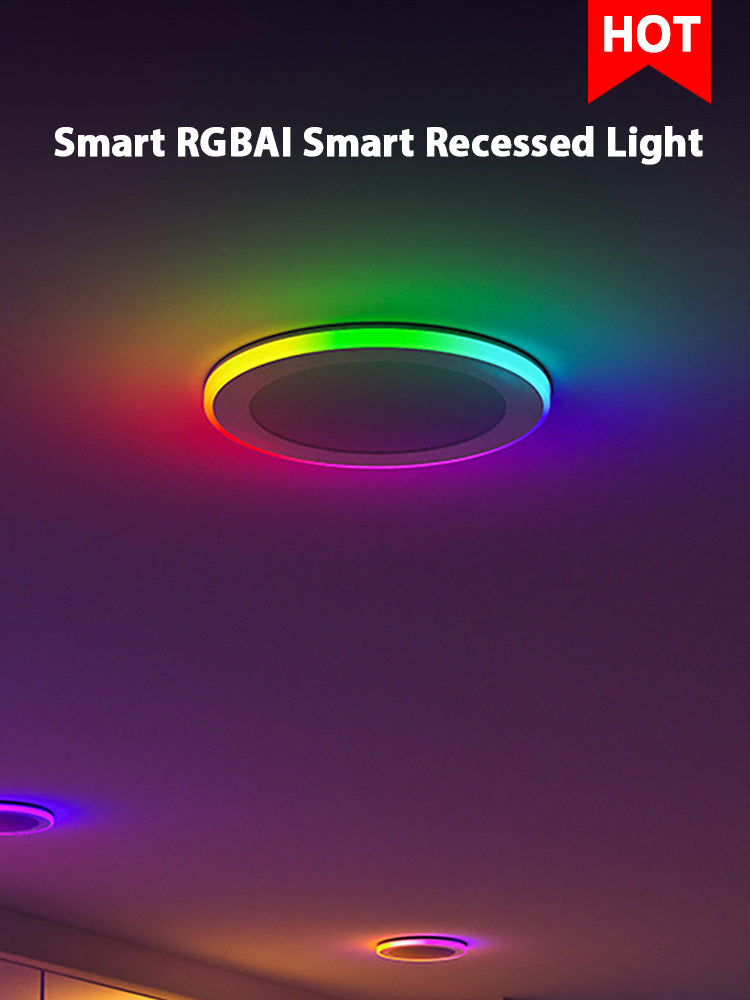You can install a 6 inch recessed light safely and efficiently by starting with the basics. Always turn off the circuit breaker and use a voltage tester before you touch any wires. This step helps prevent shocks and fire hazards, as experts warn that skipping it leads to serious risks. Careful planning and proper spacing give you even lighting without dark spots. With the right tools, you can handle most steps yourself. If you feel unsure at any point, it’s smart to call a professional.

Key Takeaways
-
Always turn off the circuit breaker and use a voltage tester before handling any wires to stay safe from electric shocks.
-
Plan your light layout carefully by measuring and spacing lights evenly to avoid dark spots and get the best lighting effect.
-
Use the right tools and materials, including IC-rated housings if your ceiling has insulation, to ensure a safe and lasting installation.
-
Secure all wiring connections tightly inside junction boxes and mount fixtures firmly to prevent flickering and loose lights.
-
Regularly inspect and clean your recessed lights to keep them bright and working well, and call a professional if you feel unsure at any step.
Benefits
Lighting Advantages
When you choose recessed lighting, you get more than just a modern look. You enjoy real, measurable benefits in your home. Here are some of the top advantages:
-
LED recessed lights use much less energy than old-style bulbs. This means you save money on your electricity bill every month.
-
You can pick from different color options and dimming features. This lets you set the mood for any room, whether you want it bright for homework or soft for movie night.
-
Recessed lights make rooms feel bigger and more open. Because they sit flush with the ceiling, you don’t lose any headroom.
-
You can highlight special features in your home, like artwork or a reading nook, by placing lights exactly where you want them.
-
These lights last a long time, so you don’t have to change bulbs as often. That saves you time and money.
-
Using layered lighting—like combining general, task, and accent lights—makes your space both beautiful and practical.
Tip: Studies show that switching to LED recessed lighting can cut energy use by up to 44% compared to fluorescent lights. LEDs also reach full brightness faster and don’t contain mercury, making them safer for your family and the environment.
Why Proper Setup Matters
Getting the setup right is just as important as picking the right lights. If you space your lights correctly and follow safety rules, you get better results and avoid problems later. Here’s why setup matters:
|
Aspect |
Details |
|---|---|
|
Mounting |
Recessed lights need the right spacing—at least 24 inches apart for some models—to work well and stay safe. |
|
Listings |
Good setups follow safety codes and standards, which help prevent accidents and make sure your lights last. |
|
Importance |
Careful planning keeps your lighting even, avoids dark spots, and helps your home meet building codes. |
When you use insulated housings and trim rings, you stop air leaks and keep your heating and cooling bills lower. Adding dimmers or smart controls lets you adjust brightness and save even more energy. In fact, automatic dimming systems can save over 170 kWh of electricity each year, putting money back in your pocket. Regular checks and good installation also mean fewer repairs and less hassle down the road.

6 Inch Recessed Light Safety
When you install a 6 inch recessed light, safety comes first. You want to avoid accidents and keep your home safe. Let’s break down the most important steps you need to follow before you start any electrical work.
Power Off
Always turn off the power at the circuit breaker before you do anything else. This step protects you from electric shock. Don’t just flip the light switch. Go to your breaker box and shut off the circuit that controls the area where you’ll work. If you’re not sure which breaker to use, turn off the main breaker for the whole house. It’s better to be safe than sorry.
Tip: Tape a note over the breaker so no one turns it back on while you’re working.
Voltage Testing
Turning off the breaker is not enough. You need to make sure the wires are really dead. Use a voltage tester to check every wire you plan to touch. Sometimes, a wire can stay live because of a hidden or mislabeled circuit. There have been cases where people got shocked because they thought the power was off, but another circuit kept the wires live. That’s why you should always test before you touch.
Here’s how you can stay safe with voltage testing:
-
Use a modern voltage tester or digital multimeter. These tools give you accurate results and help you spot live wires.
-
Test your voltage tester on a known live outlet before and after you use it. This step makes sure your tester works and gives you the right reading.
-
Don’t rely only on non-contact testers. They are good for a quick check, but always follow up with a direct-contact test.
-
Remember, safety rules from groups like OSHA and NFPA require you to test for voltage before you start any electrical work.
-
Keep your tester in good shape. Old testers can give false readings, which can be dangerous.
Note: Even if you have turned off the breaker, always double-check with your tester. It only takes a few seconds and can save your life.

Protective Gear
You should wear the right gear every time you work with electricity. This gear keeps you safe from shocks, burns, and other injuries. Here’s what you need:
-
Safety glasses to protect your eyes from dust and debris.
-
Insulated gloves to keep your hands safe from electric shock.
-
A dust mask if you’re cutting into the ceiling, so you don’t breathe in particles.
-
Long sleeves and pants to protect your skin.
Keep a first aid kit nearby. Make sure your phone is charged in case you need to call for help. If you ever feel unsure or nervous, stop and get help from a professional. Your safety matters more than finishing the job quickly.
Remember: You should always wear your protective gear until you have tested and confirmed that all wires are dead.
Tools and Materials
Essential Tools
Before you start your project, gather all the tools you need. Having everything ready makes the job smoother and helps you avoid mistakes. Here’s a handy checklist:
-
Stud finder: Helps you locate ceiling joists so you don’t cut into them by accident.
-
Voltage tester: Lets you check if wires are live before you touch them.
-
Wire stripper: Makes it easy to remove insulation from wires.
-
Drywall saw or hole saw: Cuts clean holes in your ceiling for the lights.
-
Tape measure: Ensures your spacing is even and accurate.
-
Pencil or marker: Marks your measurements and cut lines.
-
Screwdriver: Tightens screws on housings and electrical boxes.
-
Ladder: Gives you safe access to the ceiling.
Tip: Always double-check your tool list against the instructions that come with your fixtures. Some models may need special tools.
Materials List
You also need the right materials to get a safe and lasting result. Here’s what you should have on hand:
-
Recessed light housings: Make sure they match the size you want to install.
-
LED light trims or bulbs: Pick the color and brightness that fit your space.
-
NM-B electrical cable: This type of wire is common for home lighting projects.
-
Wire nuts and connectors: Secure your electrical connections.
-
Junction boxes: Use these if your setup requires extra wiring space.
-
Ceiling insulation: If you have insulation, check that your light housings are IC rated. IC rated fixtures can touch insulation safely because they have thermal protection. The junction box is thermally shielded, which lowers fire risk and keeps your home safer.
-
Mounting clips or brackets: These hold the housings in place.
Note: Always read the fixture specifications before you buy materials. Some lights need special trims or connectors. If you’re not sure, ask a lighting expert or check the manufacturer’s guide.
Layout
Measuring
Getting your layout right starts with careful measuring. Grab your tape measure and sketch out your room on graph paper. This helps you see where everything goes before you start cutting holes. Measure the length and width of your room. Write down the ceiling height too. These numbers help you figure out the best spots for each 6 inch recessed light.
Use a stud finder to locate ceiling joists. Mark these spots so you don’t accidentally cut into them. Most experts suggest keeping each fixture at least 6 inches away from any joist. This keeps your lights safe and makes installation easier.
Here’s a simple way to plan your spacing:
-
Measure the distance from the wall to where you want your first light. Keep it about 18 to 24 inches away from the wall or cabinets.
-
Use the “spacing formula.” The space between each light should be about twice the distance from the wall to the first light. For example, if your first light is 2 feet from the wall, space the next light 4 feet away.
-
Divide your ceiling height by two. This gives you a good starting point for how far apart to place your lights. For an 8-foot ceiling, space your lights about 4 feet apart.
-
Sketch your plan and check for shadowy corners. Adjust your layout if you see any dark spots.
Tip: Use a laser level to make sure your marks line up straight across the ceiling.
Marking
Once you have your measurements, it’s time to mark the ceiling. Use a pencil or marker for clear, easy-to-see lines. Mark the center of each planned light spot. Double-check your marks with your tape measure to make sure they match your plan.
You can use the paper template that comes with your light fixture to trace the exact size of the hole. Place the template on your mark and draw around it. This step helps you cut the right size hole for your 6 inch recessed light.
A good layout means your lights will look even and give you the best light. Take your time with this step. If you need to, make a few drafts of your plan before you start cutting.
Ceiling Holes
Mark Cutouts
You want your lights to look even and professional, so marking your cutouts the right way is key. Start by grabbing the paper template that comes with your light fixture. If you don’t have one, you can make your own using cardstock or a piece of poster board. Trace the outline of the frame or cutout onto the template. Cut it out carefully so it matches the size of your light.
Now, measure the center of the hole on the back of your fixture. Transfer this spot onto your template. Place the template on your ceiling where you want the light to go. Tape it up and double-check that it lines up with your marks from the layout step. If you want to be extra sure, test the template on a less visible spot first. Drill a small hole through the marked center and see if it lines up perfectly. If it doesn’t, adjust your template and try again. Only move forward when you know the placement is just right.
Tip: Taking a few extra minutes to check your template can save you from patching up a misplaced hole later!
Cut Openings
Once you’re happy with your marks, get ready to cut. Clean the ceiling surface first. Wipe away any dust or cobwebs so your marks stay clear and your tools work smoothly. Use a drywall saw or hole saw to cut along the outline you traced. Work slowly and keep your hand steady.
Always cut holes at least 6 inches away from any ceiling joist. This helps you avoid damaging the structure of your home. If you hit a joist, you might have to move your light or patch the ceiling, which can be a hassle. After you finish cutting, remove any loose debris from the hole. Now you’re ready for the next step—installing your new lights!
Remember: Double-check your measurements before you cut. It’s much easier to erase a pencil mark than to fix a hole in the wrong spot.
Wiring
Run Cable
You want your 6 inch recessed light to work safely and last a long time. That starts with running the right cable the right way. Use NM-B cable rated for 90°C or higher. This type of cable can handle the heat inside your ceiling and meets the rules set by the National Electric Code (NEC). Start at your power source. Run the cable to your switch box, then from the switch to the first light. If you have more than one light, keep running the cable from one fixture to the next.
Leave extra cable at each light location. Most experts suggest leaving about 6 to 8 inches of slack at every fixture. This extra length makes it easier to connect the wires and helps if you ever need to remove or replace a light in the future. When you staple the cable to framing, keep the staples close to boxes but not too tight. The local code often says to staple within 8 to 12 inches of each box and every 4.5 feet along the run. If your cable runs near the edge of a stud or joist, use a steel plate to protect it from nails or screws.
Tip: Always check your local electrical codes before you start. Some areas have special rules for how you run and secure cables.
Secure Connections
Making safe and strong connections is just as important as running the cable. You want every wire to stay tight and safe inside the box. Use UL Listed wire nuts or connectors. These are tested for safety and make sure your wires do not come loose. Match the connector to the type and size of wire you are using. For NM-B cable, use NM/clamp connectors. If you use a different type of cable, pick the right connector for that type.
Here is a checklist to help you make secure connections:
-
Strip just enough insulation from each wire so the copper shows, but not too much. About 3/4 inch is usually enough.
-
Twist the wires together tightly before you screw on the wire nut.
-
Tug gently on each wire after you connect it. If it moves, redo the connection.
-
Make sure all ground wires are connected together and to the green screw in the box.
-
Keep all connections inside a junction box or the fixture’s driver box. Never leave wires exposed.
Note: The NEC and local codes require all connections to be inside a box that you can reach later. Do not bury boxes behind drywall or insulation.
If you are not sure about the wire size, check a voltage drop chart. The right wire size depends on how many lights you have and how far the cable runs. Using the wrong size can cause your lights to flicker or even overheat. Always double-check your work before you turn the power back on.
If you ever feel confused or worried about wiring, stop and call a professional. Electrical work can be dangerous if you do not follow the rules. Many case studies show that using the right materials, following code, and making secure connections help prevent fires and keep your home safe.
Install Housings
Mount Fixtures
Now you’re ready to put the housings into the ceiling. This step is where your project really starts to take shape. First, check that you have the right type of housing for your ceiling. If you have insulation above the ceiling, use IC-rated housings. These keep things safe and prevent overheating.
Hold the housing up to the hole you cut. Most housings have clips, bars, or brackets that help you lock them in place. Push the housing into the hole until it sits flush with the ceiling. Then, use the mounting clips or screws to secure it. You want the housing to feel snug and not wiggle when you touch it.
Tip: Always follow the instructions that come with your fixture. Each model can have a slightly different way to attach the housing.
A good mount keeps your lights steady and helps them last longer. Guides say that a firm attachment stops problems like flickering or uneven lighting. If you have a vaulted or sloped ceiling, look for special housings made for those spaces.
Check Fit
After you mount the fixtures, check that everything fits just right. The housing should sit flat against the ceiling. There should be no gaps around the edge. If you see a gap, the housing might not be tight enough. Try adjusting the clips or screws until it fits better.
Give the housing a gentle tug. It should not move or fall out. If it feels loose, double-check your mounting method. A secure fit helps prevent future problems, like the light falling or overheating.
-
Make sure the wiring inside the housing is not pinched or twisted.
-
Check that the housing lines up with your marks from the layout step.
-
If you plan to use trims or covers, test them now to see if they snap on easily.
Note: Proper fit and secure mounting help your lights work safely and look great for years.
Connect Lights
Attach Wires
You have your housings in place. Now it’s time to connect the wires. Start by pulling the wires through the opening in the housing. Strip about three-quarters of an inch of insulation from each wire. Match the black wire to black, white to white, and ground to ground. Twist the wires together tightly. Use a wire nut to cover each connection. Give each wire a gentle tug to make sure it stays put.
Tip: If you see any copper showing outside the wire nut, remove the nut and trim the wire. Try again until the connection looks neat and safe.
Keep all the wires inside the junction box or the driver box. Never leave wires hanging out. This step keeps your setup safe and helps prevent problems later. If your fixture has push-in connectors, follow the instructions. Push each wire in until it clicks. Double-check that every wire is secure.
Secure Fixtures
After you attach the wires, you need to secure the fixture in the ceiling. Push the fixture up into the housing. Most models have spring clips or tabs. Squeeze the clips and slide the fixture into place. Release the clips so they grip the ceiling from above. The fixture should sit flush with the ceiling and not wobble.
A secure fit does more than just look good. It helps your lights last longer. When you install your lights the right way, you help them stay cool and work better. Professional installers and product testing reports show that proper installation and maintenance are key for long-term performance. Good connections and a snug fit keep the voltage steady and stop heat from building up. If you skip these steps, your lights might not last as long or could even get damaged.
Note: If your fixture feels loose or uneven, take it out and try again. A tight fit means fewer problems down the road.
|
Step |
What to Check |
|---|---|
|
Wires attached |
No loose or exposed wires |
|
Fixture secured |
Sits flat, clips engaged |
|
No gaps |
Trim covers edges neatly |
Take a step back and look at your work. Your lights should look even and feel sturdy. Now you’re ready for the next step—testing your new setup!
Test and Adjust
Power On
You have installed your lights and made all the connections. Now comes the exciting part—testing your work. Head to your breaker box and turn the power back on. Walk back to the room and flip the light switch. If everything works, you should see your new lights shine bright.
If a light does not turn on, do not worry. Turn the power off again before you check your wiring. Sometimes a wire nut is loose or a wire is not connected well. Double-check each connection. Make sure all wires match the right colors. Try again after you fix any issues.
Tip: If you see flickering or only some lights work, check the bulbs and the wiring. Sometimes a bulb is not screwed in tight enough.
Final Adjustments
Now that your lights work, you can make a few small changes to get the best look. Stand in the middle of the room and look at the ceiling. Do the lights look even? If you see a fixture that is not flush with the ceiling, press it gently until it sits flat.
You can also adjust the direction of the light if your fixtures allow it. Some models let you tilt or rotate the trim. Aim the light at a wall, a piece of art, or a reading spot. This helps you get the mood you want in your space.
Here is a quick checklist for your final adjustments:
-
Check that all trims sit tight against the ceiling.
-
Make sure there are no gaps or shadows around the fixtures.
-
Test the dimmer switch if you installed one.
-
Clean up any dust or fingerprints on the trims.
Remember: Take your time with these last steps. Small tweaks can make a big difference in how your room looks and feels.
Troubleshooting
Flickering
Flickering lights can be annoying and distracting. You might notice your recessed lights blink or dim for no clear reason. This problem often points to a few common issues.
-
Loose electrical connections are a top cause. Wires inside the junction box or socket may not be tight enough. When this happens, your lights can flicker or even turn off for a moment.
-
Sometimes, the socket inside the fixture does not make good contact with the bulb. You can gently adjust the metal tab in the socket to help the bulb fit better.
-
If you use a dimmer switch, make sure it works with LED lights. Many older dimmers do not match with new LED fixtures. Using the wrong dimmer can make your lights flicker.
-
Large appliances or motors on the same circuit can cause electrical interference. This can make your lights blink when the fridge or washing machine turns on.
-
Poor-quality LED drivers inside the fixture can also lead to flickering. If you have tried everything else, you may need to replace the fixture.
Tip: If tapping near the light makes it work for a moment, you likely have a loose connection. Turn off the power and check all wiring.
Loose Fixtures
Loose fixtures can make your ceiling look messy and may even cause safety problems. You want your lights to sit flat and snug against the ceiling. Here are some reasons why a fixture might feel loose:
-
The mounting clips or brackets may not be fully engaged. Double-check that you pushed the fixture in all the way.
-
Sometimes, the hole in the ceiling is too big. If this happens, the fixture cannot grip the ceiling tightly.
-
Wires inside the housing can get in the way and stop the fixture from sitting flat.
-
Over time, vibrations or bumps can loosen the fixture. You might need to remove it and reinstall it for a better fit.
If you keep having trouble, check the instructions for your specific light. Some fixtures need special steps to lock in place. Always make sure the power is off before you adjust anything.
Maintenance
Inspection
You want your lights to work well and last a long time. Regular inspection helps you catch small problems before they turn into big ones. Every few months, look up at your lights and check for anything unusual. Do you see flickering, dim spots, or loose trims? These signs tell you something needs attention.
-
Check that each fixture sits flat against the ceiling.
-
Make sure the trim and lens are not cracked or loose.
-
Test your dimmer switch to see if it works smoothly.
-
If your lights are in a bathroom or kitchen, look for signs of moisture around the fixture.
Tip: If you spot dust or dirt building up, plan to clean your lights soon. Dirt can block light and make your room look darker.
A regular inspection keeps your lighting system reliable. You can spot issues early and fix them before they cause trouble. This habit also helps your lights last longer and saves you money on repairs.
Cleaning
Cleaning your recessed lights is easy and makes a big difference. Dirt and dust can build up on the trim and lens. This buildup blocks light and makes your room look dull. Experts recommend cleaning your lights every three months for the best results.
-
Turn off the power before you start cleaning.
-
Use a soft, dry cloth to wipe the trim and lens.
-
For stubborn spots, use a damp cloth, but avoid getting water inside the fixture.
-
Check the area around the light for cobwebs or debris.
The 'Lighting Systems Maintenance Checklist' says that regular cleaning keeps your lights bright and helps them last longer. The 'Modern Recessed Lights' guide also suggests checking the dimmer and moisture seals during cleaning. Studies show that planned cleaning stops dirt from lowering your light output. You get better energy efficiency and do not need to install extra fixtures just to keep your room bright.
Remember: Clean lights use less energy and look better. A little effort goes a long way!
Professional Help
When to Call
Sometimes, you reach a point where you need extra help. You might feel unsure about the wiring or the ceiling looks tricky. Maybe you see old wires or find water stains near your work area. These are signs you should call a licensed electrician.
Here are some moments when you should pick up the phone:
-
You do not know which breaker controls the room.
-
The wires look damaged or frayed.
-
You see sparks or smell burning.
-
The ceiling has mold or water damage.
-
You feel nervous about any step.
Tip: If you ever feel stuck, it is always safer to ask for help. Electricians have the right tools and training to handle tough jobs.
You can also call a pro if you want to add smart controls or connect your lights to a home automation system. Some projects need permits or must follow local codes. An expert knows these rules and can save you time and stress.
Safety Concerns
Your safety comes first. Electricity can be dangerous if you do not follow the right steps. Even a small mistake can cause shocks or fires. If you feel unsure, stop and get help.
Check this quick table to see if you should call a professional:
|
Situation |
What to Do |
|---|---|
|
Unsure about wiring |
Call an electrician |
|
Old or damaged wires |
Get expert help |
|
Water near fixtures |
Ask a professional |
|
No experience with tools |
Hire a pro |
Remember: You do not have to do everything yourself. Getting help keeps you and your home safe.
You now know how to install a 6 inch recessed light safely and efficiently. Always double-check your safety steps and plan your layout before you start. Keep up with regular maintenance so your lights stay bright. If you ever feel unsure, call a professional for help. Great lighting can change the way your space feels—so enjoy your new setup!
FAQ
How many 6 inch recessed lights do I need for my room?
You can figure this out by dividing your ceiling height by two. For example, if your ceiling is 8 feet high, space your lights about 4 feet apart for even coverage.
Can I install recessed lights in a bathroom?
Yes, you can. Just make sure you use fixtures rated for damp or wet locations. Always check the label before you buy.
Do I need a special dimmer for LED recessed lights?
You do. Standard dimmers may cause flickering. Look for a dimmer marked “LED compatible” to get smooth, quiet dimming.
What if my ceiling has insulation?
You need IC-rated housings. These fixtures touch insulation safely and prevent overheating. Always check the packaging for “IC rated” before you start.
Can I replace old recessed lights with new LED ones?
Yes! Most new LED trims fit into existing housings. Just turn off the power, remove the old trim, and snap in the new LED kit.

